Nowadays, in order to grow an audience on social media, it’s not as simple as just posting when you feel like it.
Audiences have become more sophisticated over time and as a result it is important to have some sort of social media strategy. In order to start implementing that strategy, a schedule is a must for a lot of businesses.
A sharing schedule can help you double your traffic and provide your audience with consistent and valuable information that will make them more likely to follow and engage with you.
It can be a little daunting getting started, though. As you try to figure out
- Where to share?
- What to share?
- When to share?
In this post I’ll help you answer these essential questions and share some ways that you can develop and perfect your sharing schedule (with a sneak peek at how we do things here at Buffer too).
Let’s dig in!
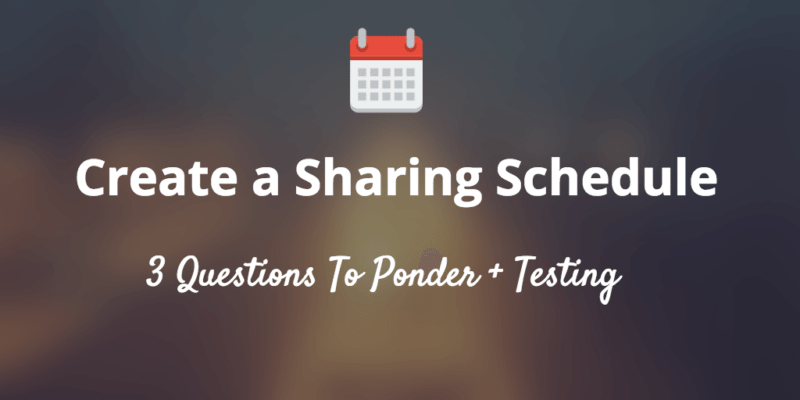
Where to Share?
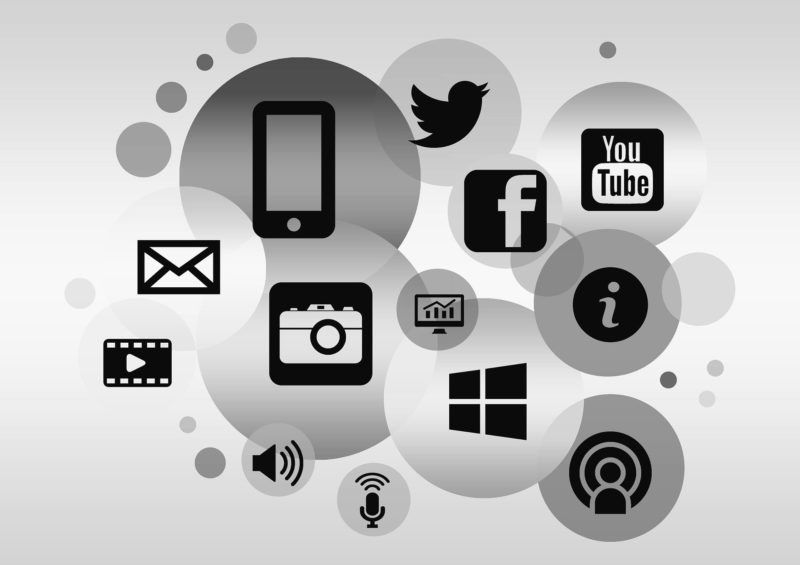
So you want to share, but where should you share? There are so many different platforms all with their own advantages, however it’s almost impossible to share on each network well unless you have a large team helping. If that isn’t the case, focusing on specific platforms might be the best solution here.
When thinking about which platforms you should prioritize in your schedule, a good question to ask yourself is:
Where is your audience?
Do they spend most of their time on Twitter? Facebook? Knowing this will allow you to focus your energy on the place where you have the potential to reap the most benefits.
Pew Research Center put together a list of the demographics of all the key social networking platforms. This might help you get a little more insight into each platform.
Once you have narrowed down the platform(s) you would like to focus on, you can now come up with you sharing plan.
Different plans for different platforms
I would definitely recommend coming up with different plans for each platform you select. Facebook is very different than Twitter for instance, so it makes sense to have a different approach when sharing to your audience on Facebook versus your audience on Twitter.
CoSchedule has a really neat graphic sharing some of the different topics to share for each platform. They also go into depth for each platform over at their articles if you would like more information.
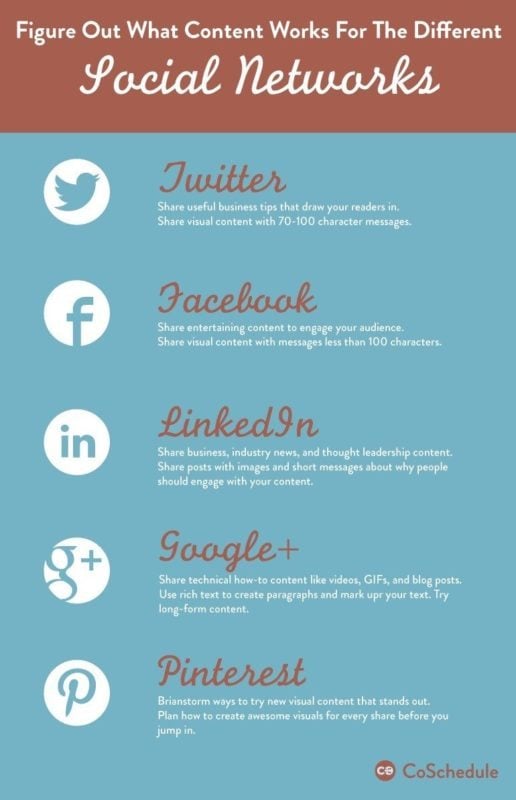
What To Share?
Now that you have figured out where you want to share your awesome content. It’s time to figure out what to share.
Sharing More Than One Type of Content
A good way to share is to have a mix of content to provide your audience. I would recommend not solely focusing on your own content, but giving them variety to look forward to. Providing a service or entertainment to your audience is more likely to lead them to follow you and engage with all of your content, rather than bombarding them with only promotional updates.
Here is an example of the type of content you can share.
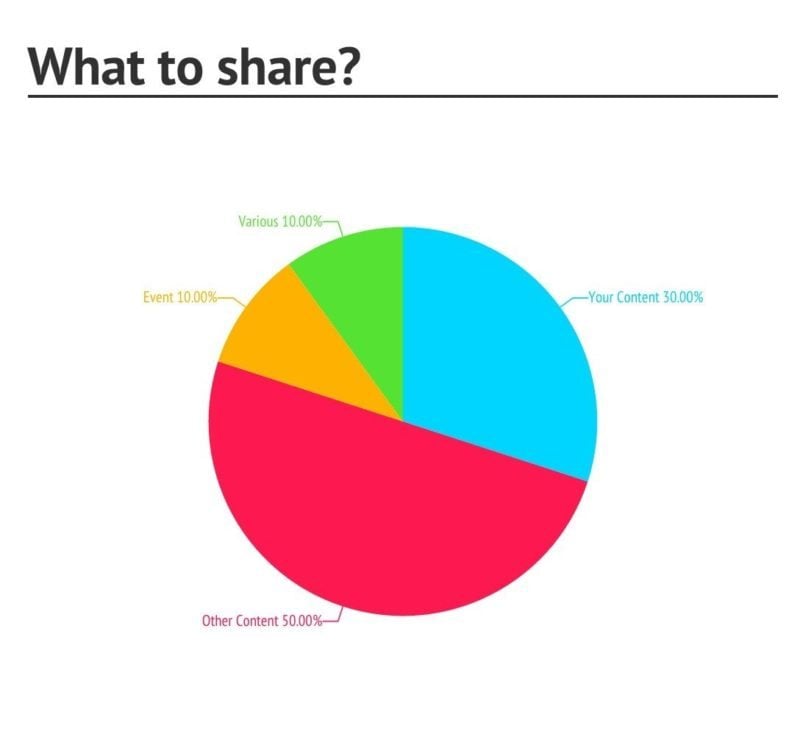
According to CoSchedule, a report from The New York Times Customer Insight Group found five major reasons why people share content with their networks:
- 49% share for entertainment or to provide valuable content to others.
- 68% share to define themselves.
- 78% share to stay connected with those they know.
- 69% share to feel involved in the world.
- 84% share to support a cause.
So give them something they can share! ?
Is Your Content Evergreen or Time Sensitive?
When it comes to your content, it can be good to think about whether what you are sharing is evergreen (can be shared multiple times at any point in time) or time sensitive.
A schedule for time sensitive material will most likely be different than one for evergreen content. For instance, time sensitive material will only be able to be shared within a specific timeframe before it is retired, while evergreen content could potentially be shared again a year from now.
If you have both types of content, coming up with separate sharing schedule for each type might be something to consider.
How Do You Want to Share?
You have your content ready to be shared, but how do you want to share it? How do you want to relay it to your audience? Do you have a specific tone you would like to use?
Here are a few things you can think about.
Voice
Creating a consistent voice is a really important component of your social media strategy. We have written an extensive guide on how you can find yours here.
Type
Links, images, videos, quotes, GIFs. There are so many different ways you can share your content. Finding what works best for you whether it’s only images or a mix of everything will be a great asset for creating your schedule.
Update
While I do recommend sharing the same content multiple times, I do not recommend you share the same update twice. Find different ways to share the content. Pick an image to share for the first time, then find a quote the second time and maybe a GIF the third, so that your audience doesn’t feel like they are always seeing the same thing in your feed.
As for the update itself, we have a handy guide and infographic to help you with sharing the optimal length every time.

Share this image on your site!
<p><strong>Please include attribution to https://buffer.com/resources with this graphic.</strong></p><br /><br /><br /><br /><br /><br /><br /><br /><br /><br /><br /><br /><br /><br /><br /><br /><br /><br /><br /><br /><br /><br /><br /><br /><br /><br /><br /><br /><br /><br /><br /><br /><br /><br /><br /><br /><br /><br /><br /><br /><br /><br /><br /><br /><br /><br /><br /><br> <p><a href=’https://buffer.com/resources/optimal-length-social-media’><img src=’/content/images/resources/wp-content/uploads/2014/10/social-media-length-infographic.jpg’ alt=’The Optimal Length of Everything Oline’ width=’1000′ border=’0′ /></a></p><br /><br /><br /><br /><br /><br /><br /><br /><br /><br /><br /><br /><br /><br /><br /><br /><br /><br /><br /><br /><br /><br /><br /><br /><br /><br /><br /><br /><br /><br /><br /><br /><br /><br /><br /><br /><br /><br /><br /><br /><br /><br /><br /><br /><br /><br /><br /><br> <p>
When To Share?
You have now figured out where and what to share. The next step is figuring out when to share and importany when to re-share! Kissmetrics found that re-sharing content could double your traffic:
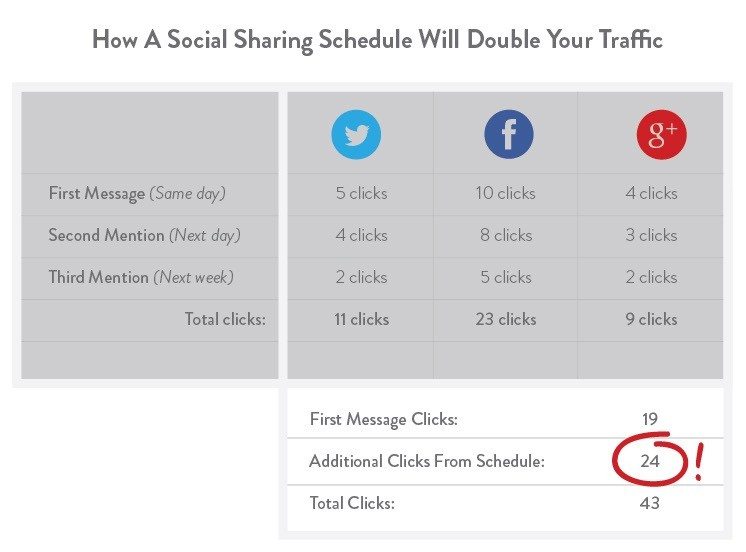
Frequency
Let’s first think about frequency. How often do you want to share?
- On publish
- Later that same day
- Next day, Daily
- A Week later
- A month later?
- Even later than that?
It really depends on your needs and your audience’s response to that frequency. Some of the best practices for each platform are highlighted in the infographic from SumAll below. This is only a guideline, I would highly encourage you to test things for yourself as well.
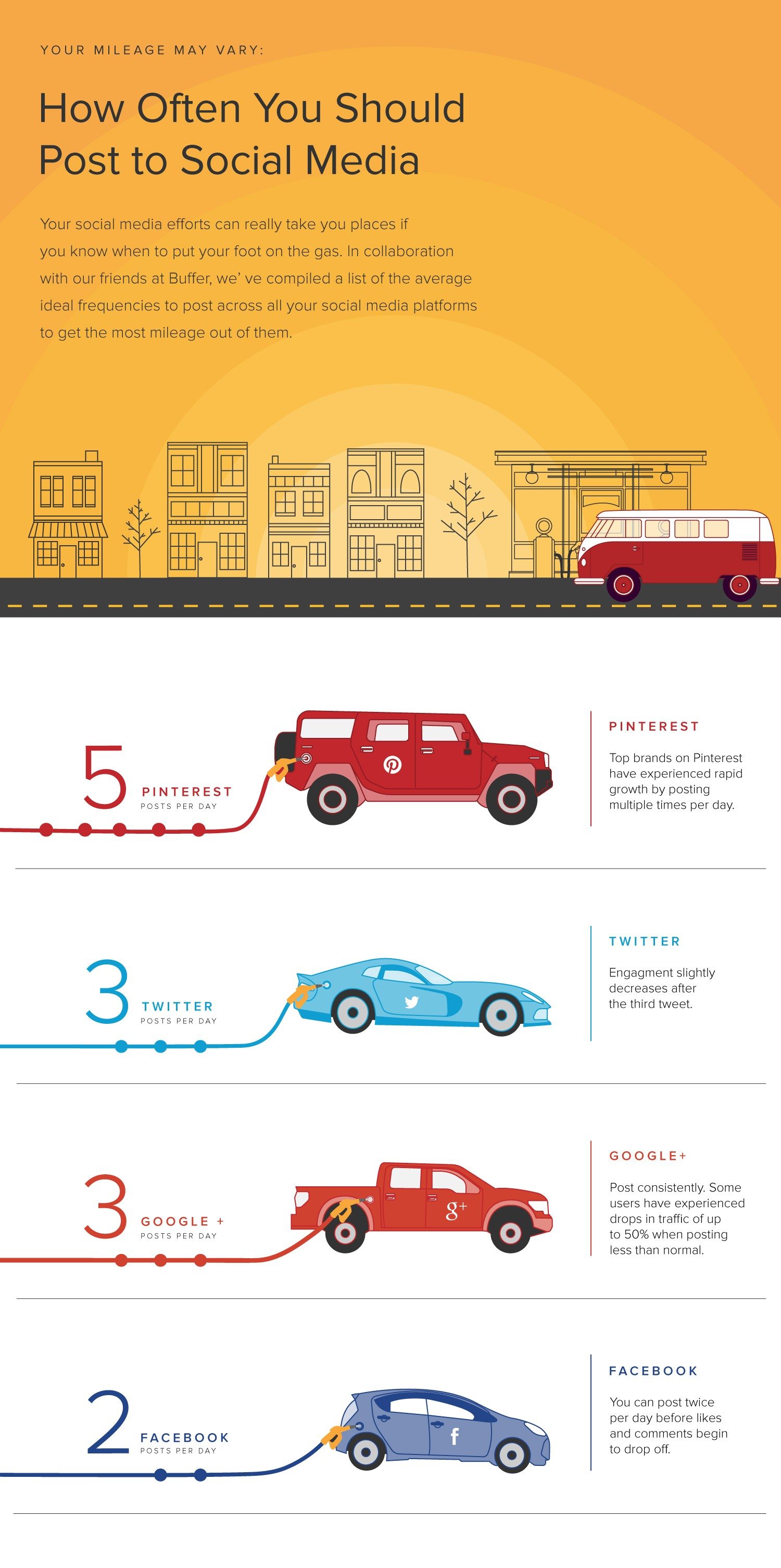
Share this image on your site!
<p><strong>Please include attribution to https://buffer.com/resources with this graphic.</strong></p><br /><br /><br /><br /><br /><br /><br /><br /><br /><br /><br /><br /><br /><br /><br /><br /><br /><br /><br /><br /><br /><br /><br /><br /><br /><br /><br /><br /><br /><br /><br /><br /><br /><br /><br /><br /><br /><br /><br /><br /><br /><br /><br /><br /><br /><br /><br /><br /><br /><br /><br /><br /><br /><br /><br /><br /><br> <p><a href=’https://buffer.com/resources/how-often-post-social-media’><img src=’https://bufferblog-wpengine.netdna-ssl.com/wp-content/uploads/2015/02/infographic-how-often-to-post-twitter-facebook-social-media.jpg’ alt=’How Often to Post to Social Media’ width=’1000′ border=’0′ /></a></p><br /><br /><br /><br /><br /><br /><br /><br /><br /><br /><br /><br /><br /><br /><br /><br /><br /><br /><br /><br /><br /><br /><br /><br /><br /><br /><br /><br /><br /><br /><br /><br /><br /><br /><br /><br /><br /><br /><br /><br /><br /><br /><br /><br /><br /><br /><br /><br /><br /><br /><br /><br /><br /><br /><br /><br /><br> <p>
Here is our sharing schedule at Buffer. You can see that we tend to share more often on Twitter and less on other platforms, leaving more time between each share.
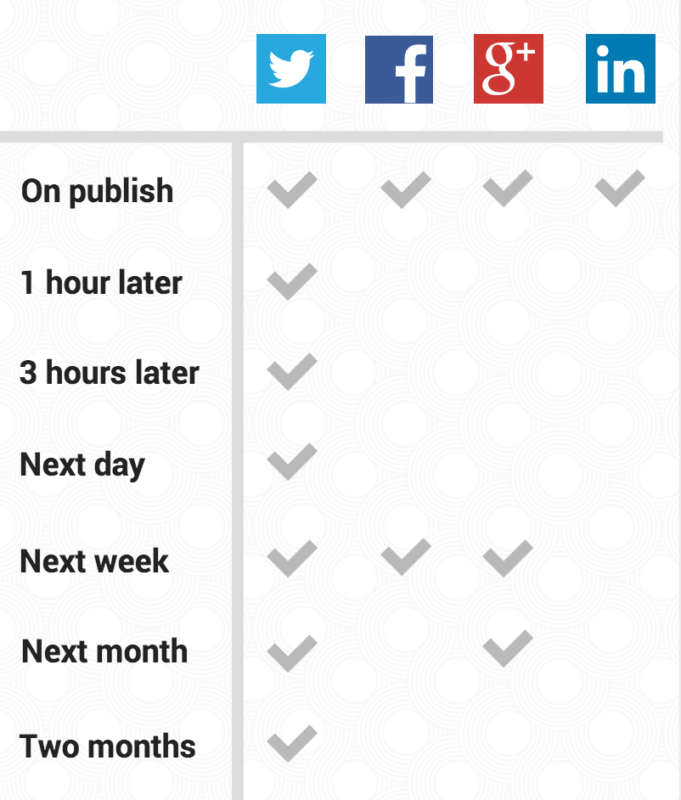
When starting out, I would recommend looking at the content you have already shared and taking a look at what you feel might be the best times to share your content. If you haven’t shared anything yet, this is the perfect time to start experimenting and learning about your audience.
A key part to figuring out your frequency will be finding the point at which sharing more would yield diminishing returns. CoSchedule has a fantastic graphic illustrating diminishing returns.
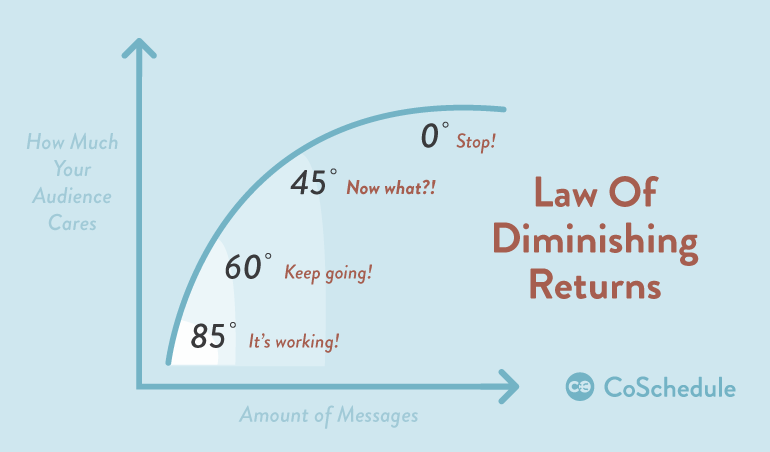
And that’s when testing comes into play, which I discuss further below.
Create a calendar
In order to keep you on track, creating a calendar might be a huge help. It can also help you outline one time events. For example if you plan special coverage around the Holidays, a calendar could help you plan ahead and make sure you won’t forget to share.
Hootsuite has a great template available for a social media content calendar.
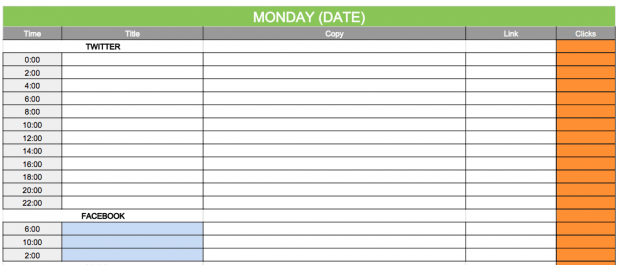
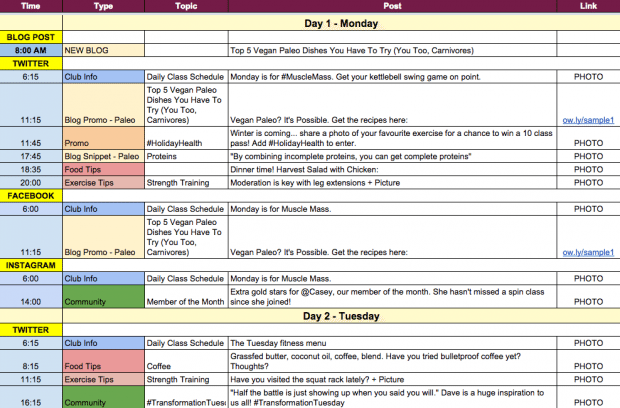
Here at Buffer, we have our own Social Media Calendar which you might find helpful in planning your sharing. The calendar is available for those on Awesome and Business plans (if you’re not yet part of our paid plans, I’m hoping you this might convince you to give it a try!) and allows you to take a look at your week of sharing at a glance.
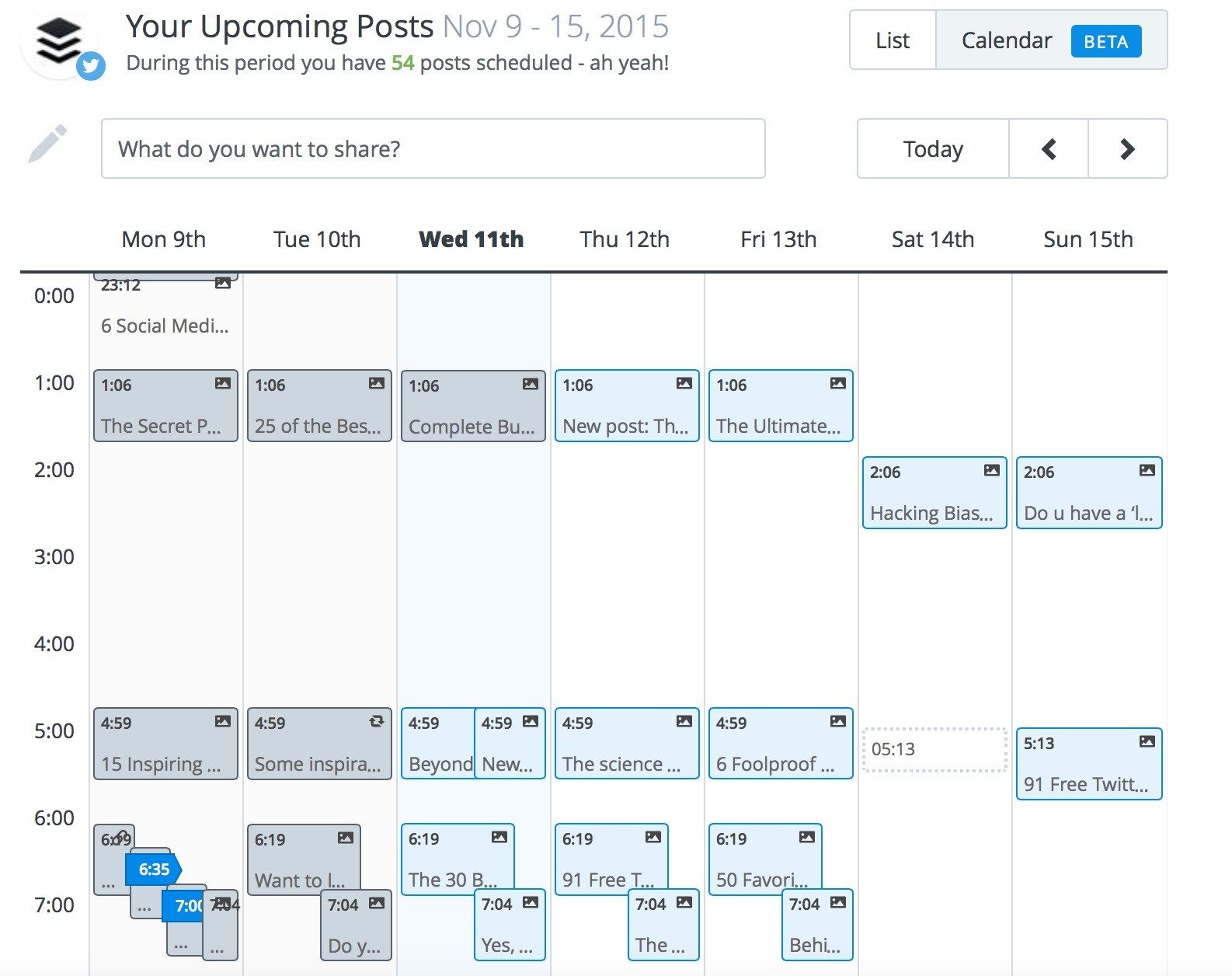
It could be helpful in planning and putting into action your sharing plan, by letting you schedule updates in the future, shifting things around if needed by dragging and dropping and giving you a visual of what you are sharing when.
Here is an example of our current social media calendar on Buffer:
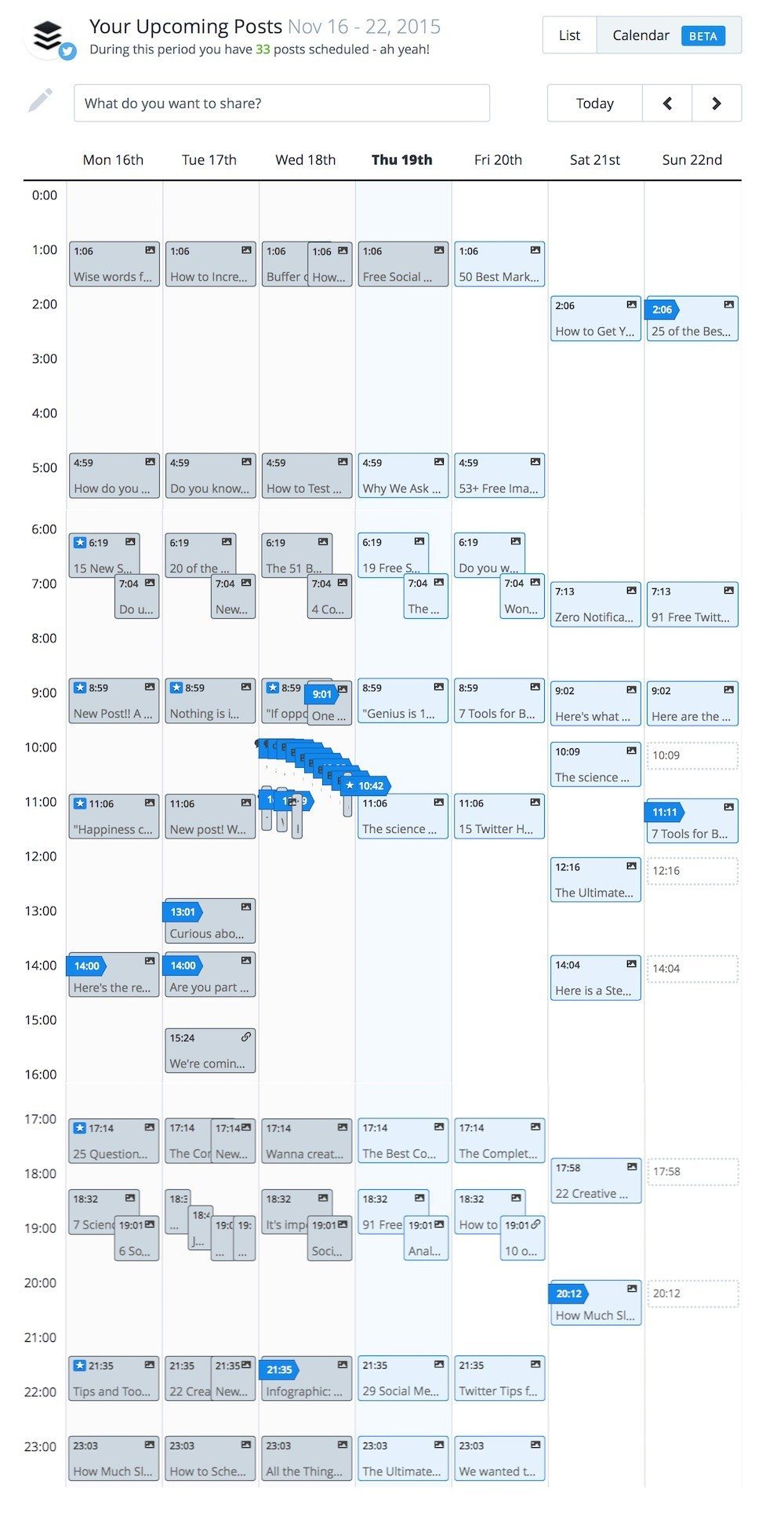
Testing
Now that you have a base to work with, I would also recommend implementing some testing into your sharing in order to come up with your perfect schedule.
Some of the things you can test include:
- Different times
- Different days
- Different topics
- Different types of updates (pictures versus no pictures, videos, quotes etc.)
I would recommend being quite intentional with the way you test things. Make sure you are able to measure the correct variable and that what you are seeing is due to the variable you are trying to measure.
For instance, if you would like to figure out the best time to share your blog posts, trying different days and times is a great way to start. However, it is important to continue the experiment for some time before drawing conclusions. An update performing really well on a Tuesday at 9am, might be due to it being an optimal time or it could be the result of the blog post itself being more popular amongst your audience. That is why I would recommend, testing that specific time multiples times in order to confirm that posts shared then do in fact always outperform posts shared at other times.
Analyze
Once you’ve spent some time testing, you can focus on analyzing your data. A few questions you can ask yourself when looking at the results include:
- When is your audience online?
- When do you get the most reach/engagement?
- What types of updates tend to get the most engagement?
Take a look at the performances for all your posts in the previous 30 (or 60) days and figure out what seemed to resonate with your audience.
Buffer provides great analytics for you to use if you are using the application to share your updates.

Adjust
You’ve tested, analyzed and now you can adjust. Taking into account everything you have learned, you might want to adjust your sharing schedule by implementing some of the discoveries from your data analysis.
For example, if you noticed an increase in engagement for blog posts updates on Tuesdays at 9am (after you have confirmed it through multiple testing), you can start sharing your blog posts at that time from now on.
I would also encourage you to continue to test, analyze and adjust, in order to make sure your schedule remains adapted to the changes in your audience’s wants and needs.
Bonus: How We Share at Buffer
At Buffer we’re constantly changing and testing new approaches when it comes to social media, especially after losing almost half our social referral traffic. I wanted to share our sharing schedule for both Twitter and Facebook and some of the things we’ve been trying lately.
How We Share on Twitter
Our current Twitter schedule involves sharing 11 times a day during weekdays and 8 times a day during weekends. Here are the current times we share (our timezone is set to Denver, CO).
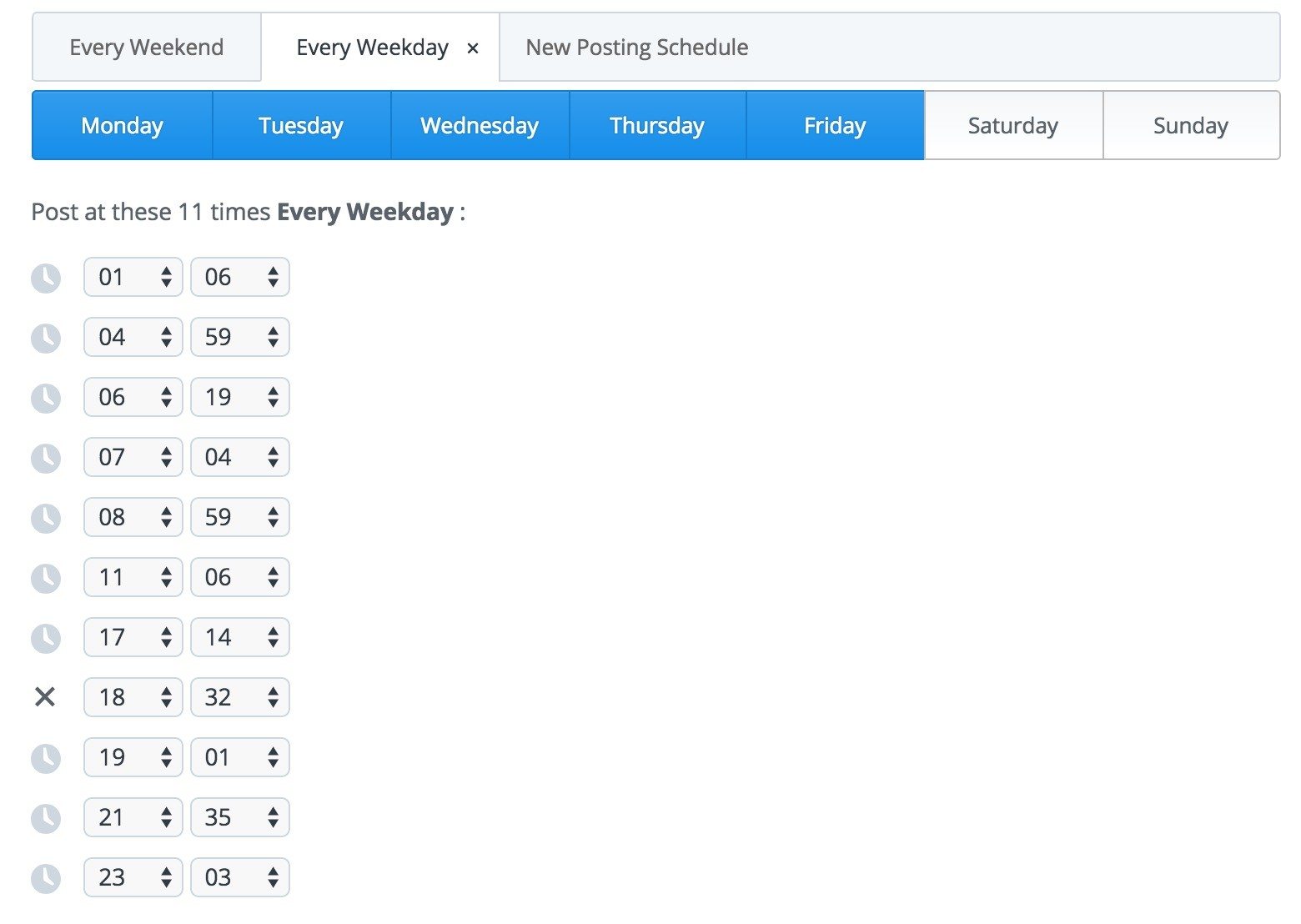
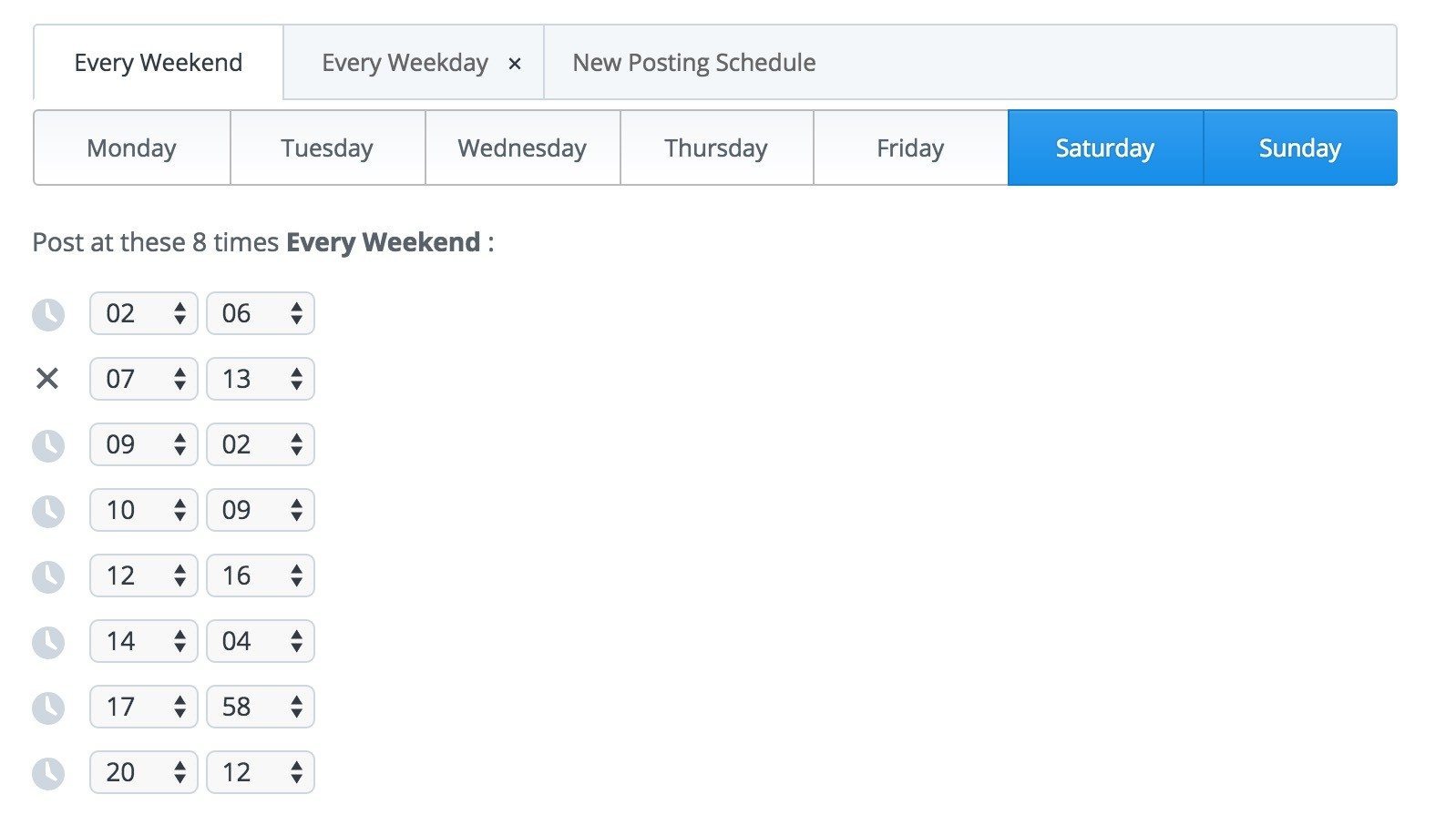
I would say that 99% of our posts include some sort of media. We tend to use mostly images, since they tend to be they help boost our engagement, we have also enjoyed sharing GIFs and videos once in a while.
Here are some of our most engaging posts in the past 30 days taken from Buffer’s Analytics. A few standout findings:
- You will noticed that these all contain an image
- 3 out of 7 are about Twitter
- Two of the updates link to the same article, highlighting the importance of re-sharing your content
- One is a competition we ran to celebrate reaching 400k followers. (We’d love to experiment a little more with competitions)
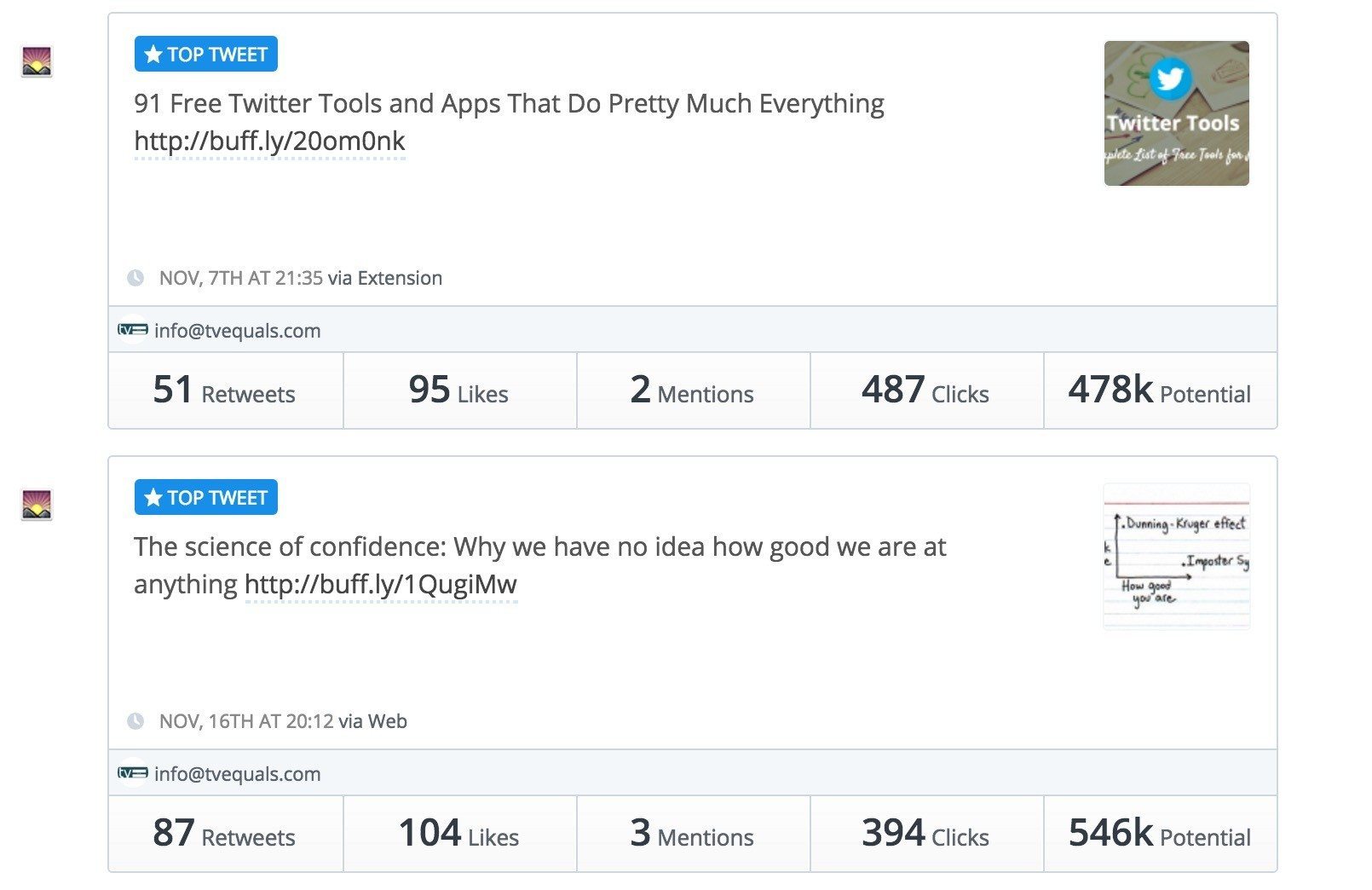
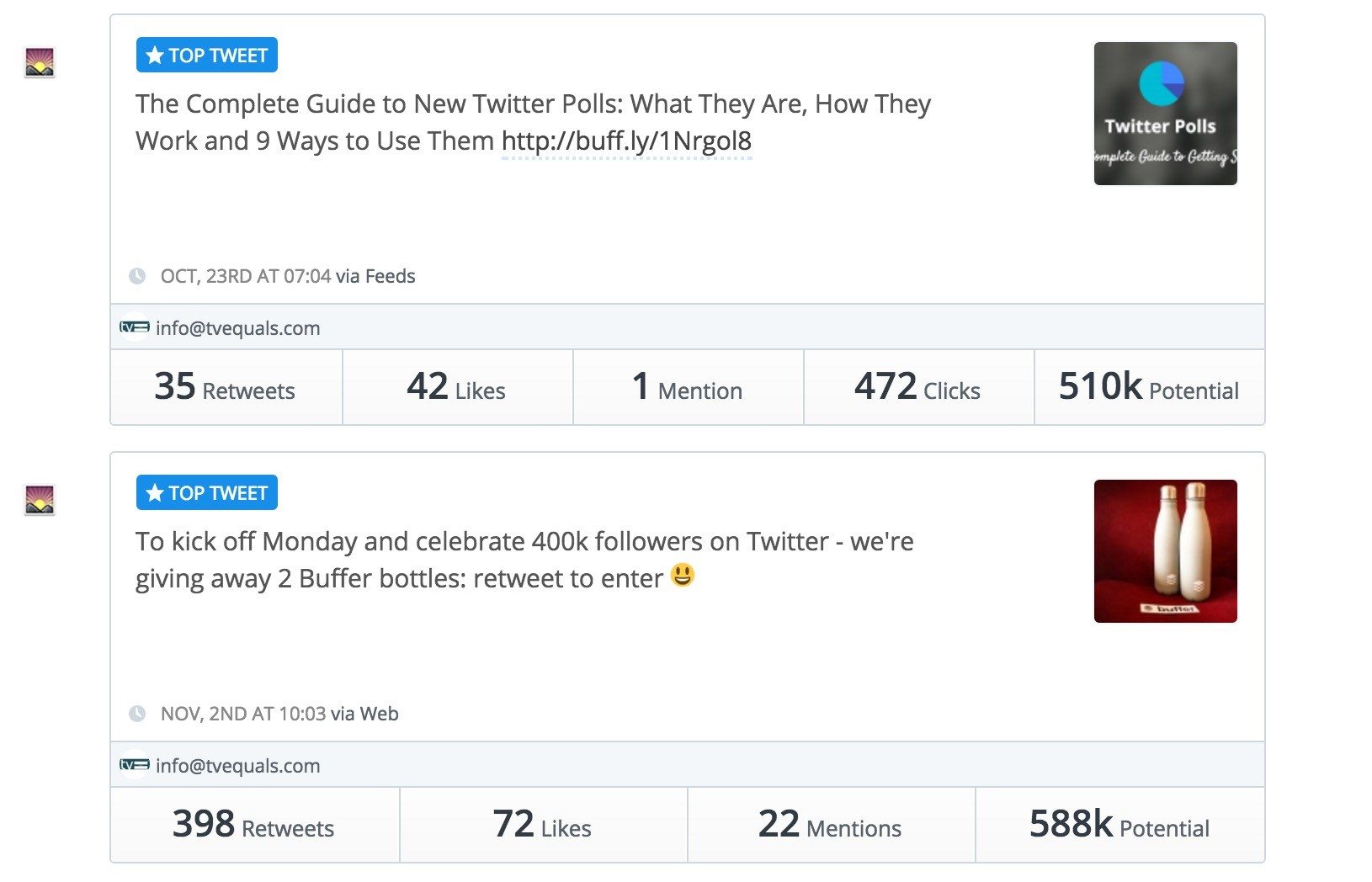
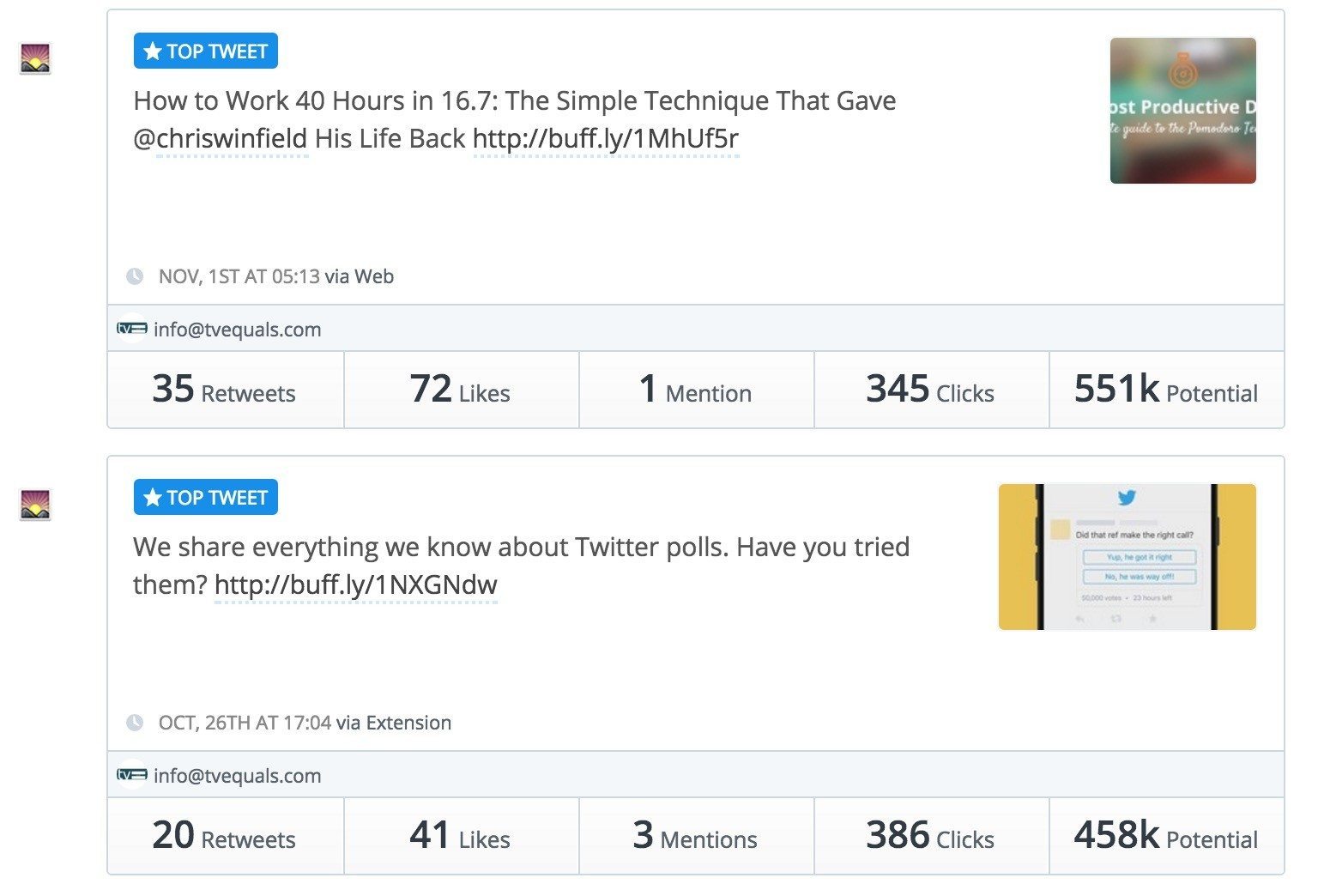
In general, we tend to reshare posts that seemed to resonate. We sometimes change the update and sometimes reshare as is.
How We Share on Facebook
Our current Facebook schedule has us sharing 3 times a day on weekdays and once on weekends. Here are the current times we share (our timezone is set to Nashville, TN).
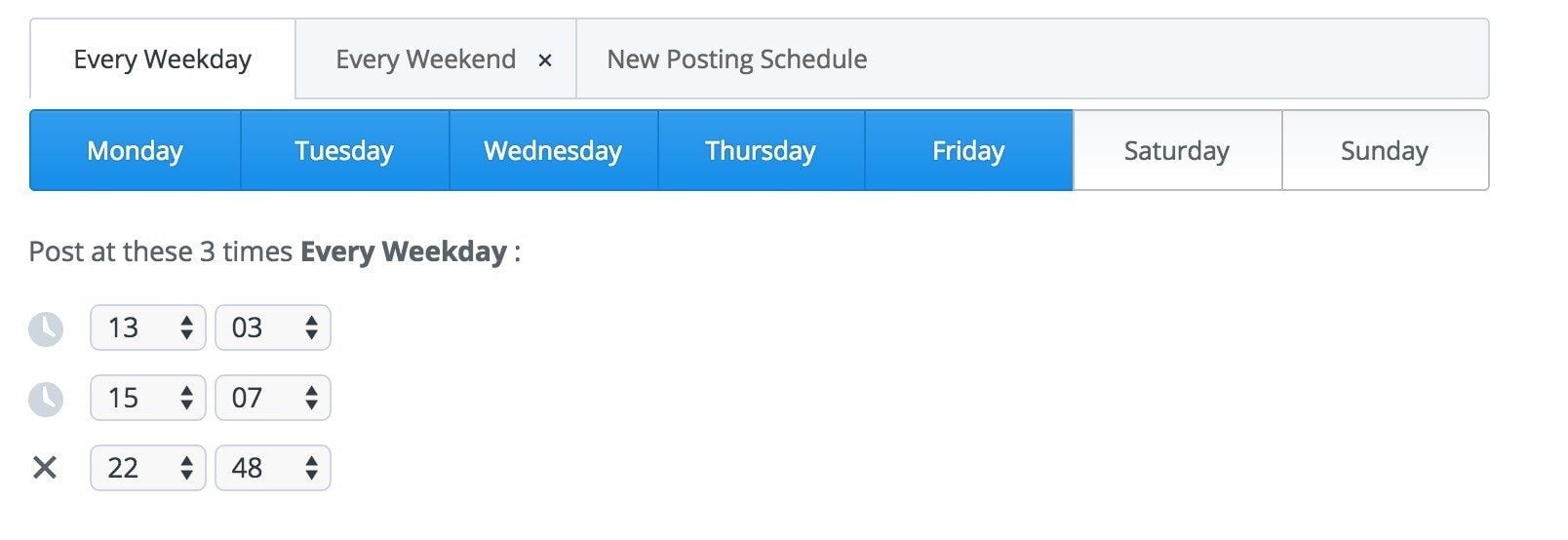

On Facebook, we focus on sharing posts from Buffer’s Social and Open blogs and use the status copy to provide context or a story around the post being shared.
We have also recently started sharing quotes that inspire us on a regular basis (those quotes are also being shared on Twitter and seem to be appreciated there as well).
Here are some of our most engaging posts in the past 30 days taken from Buffer’s Analytics. Some of the things that seem to resonate here are announcements, images, insider story about Buffer and life hacking type articles.
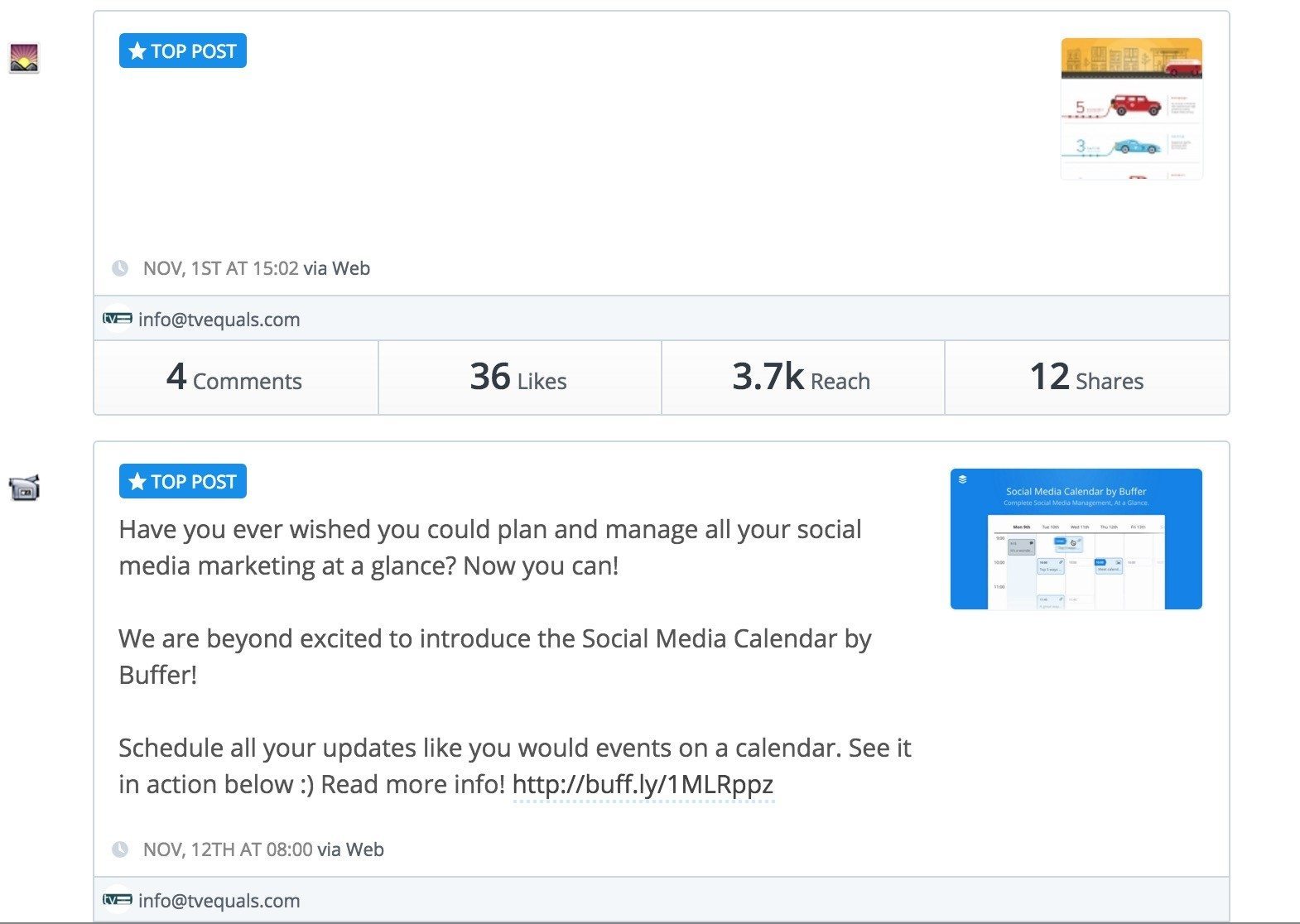
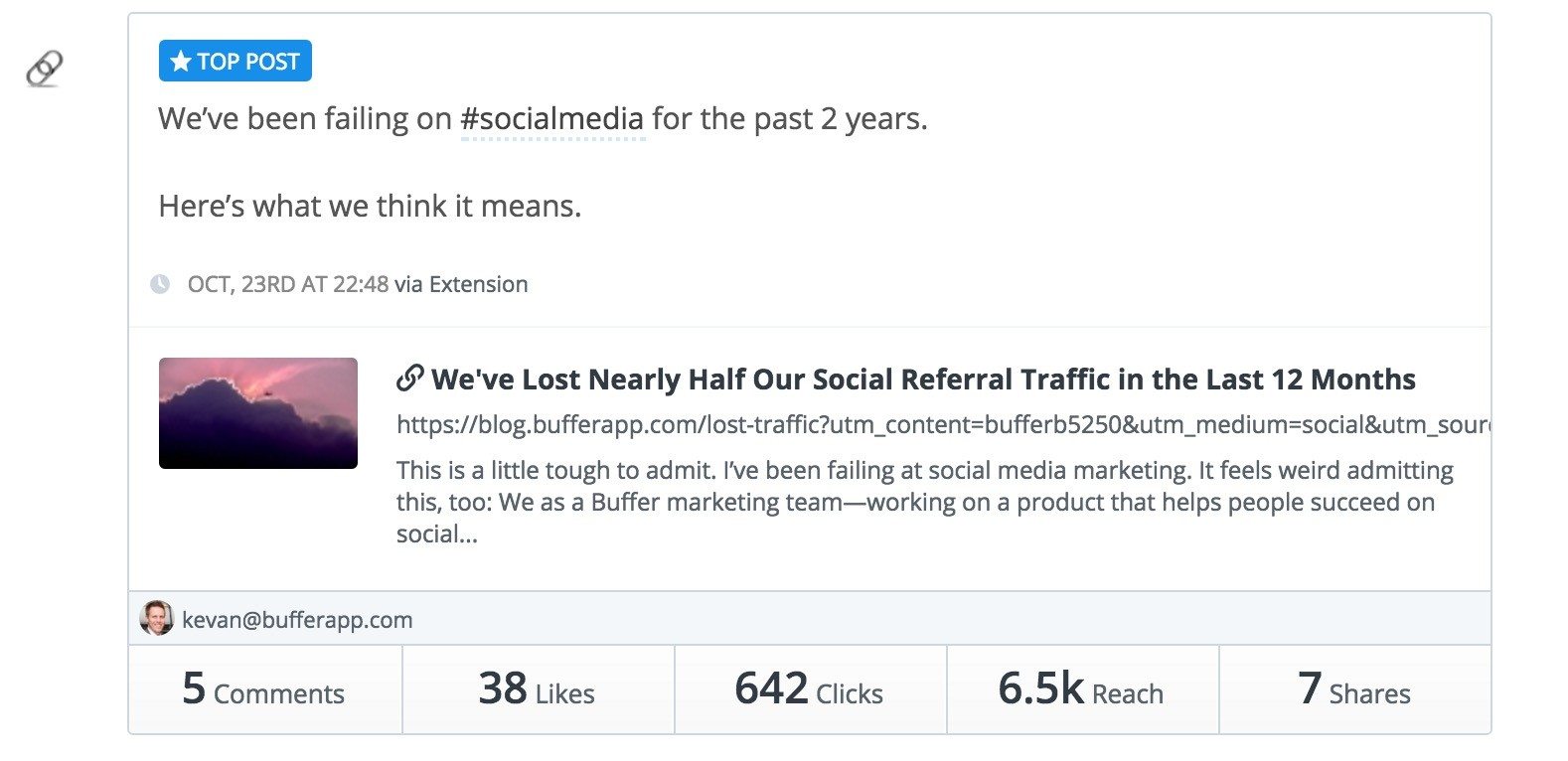
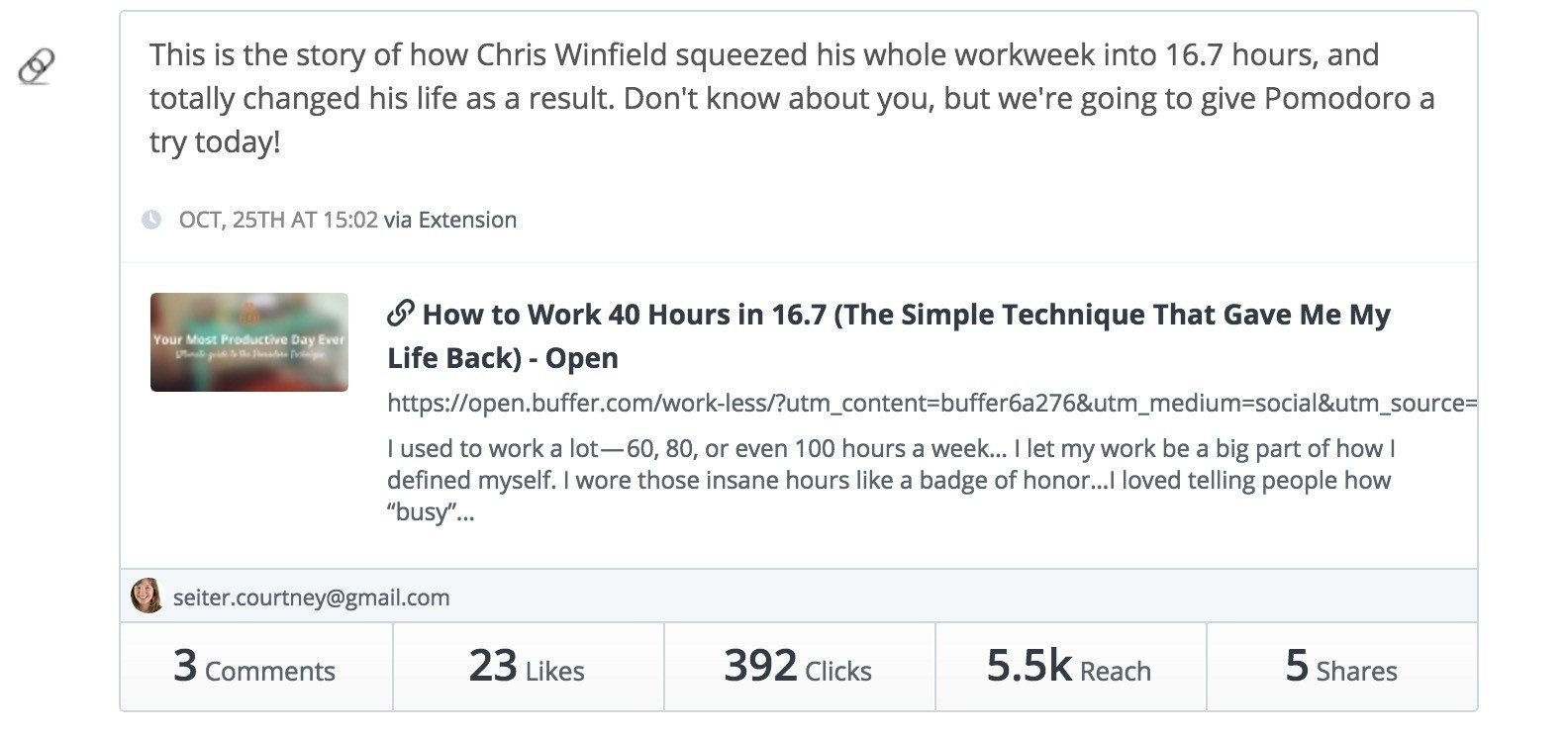
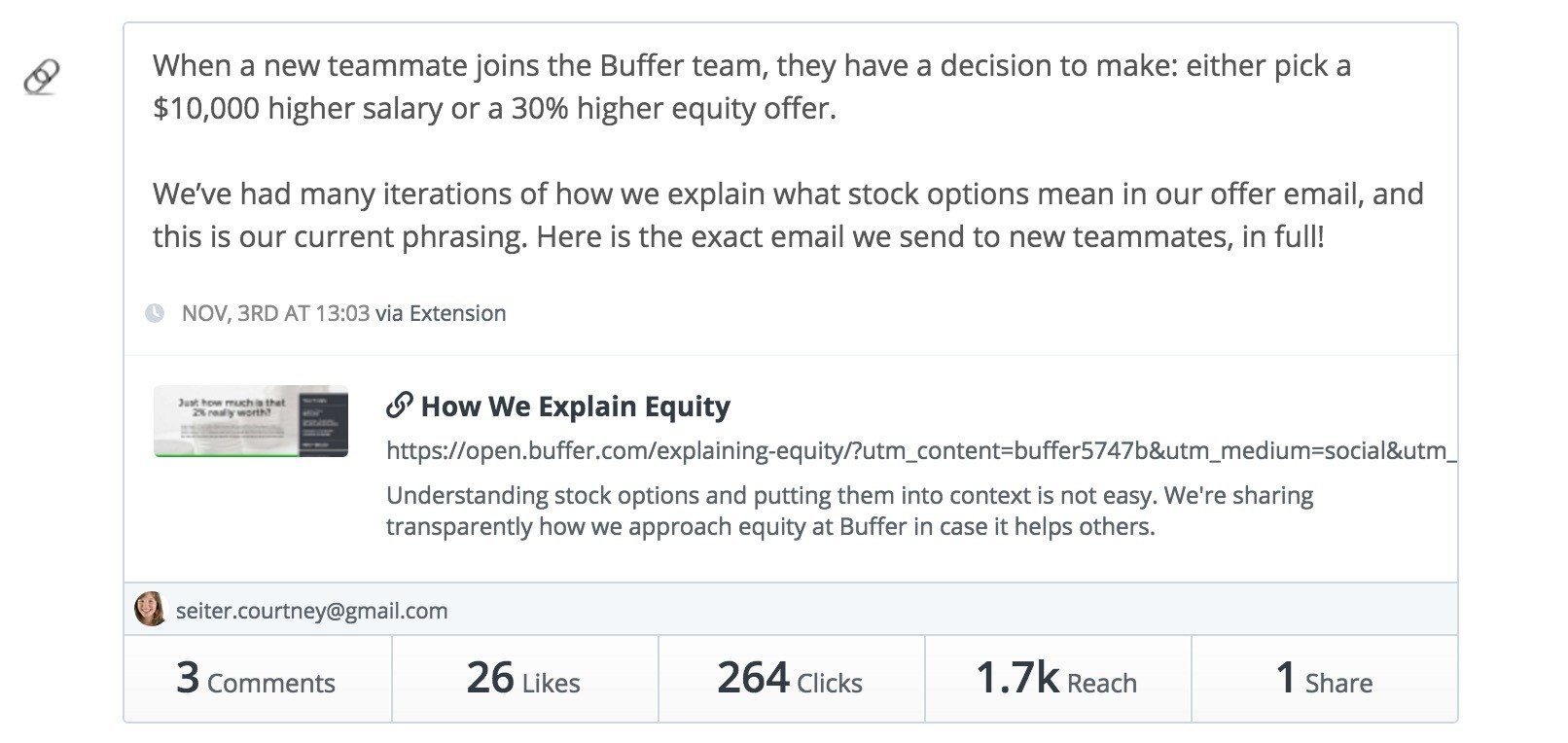
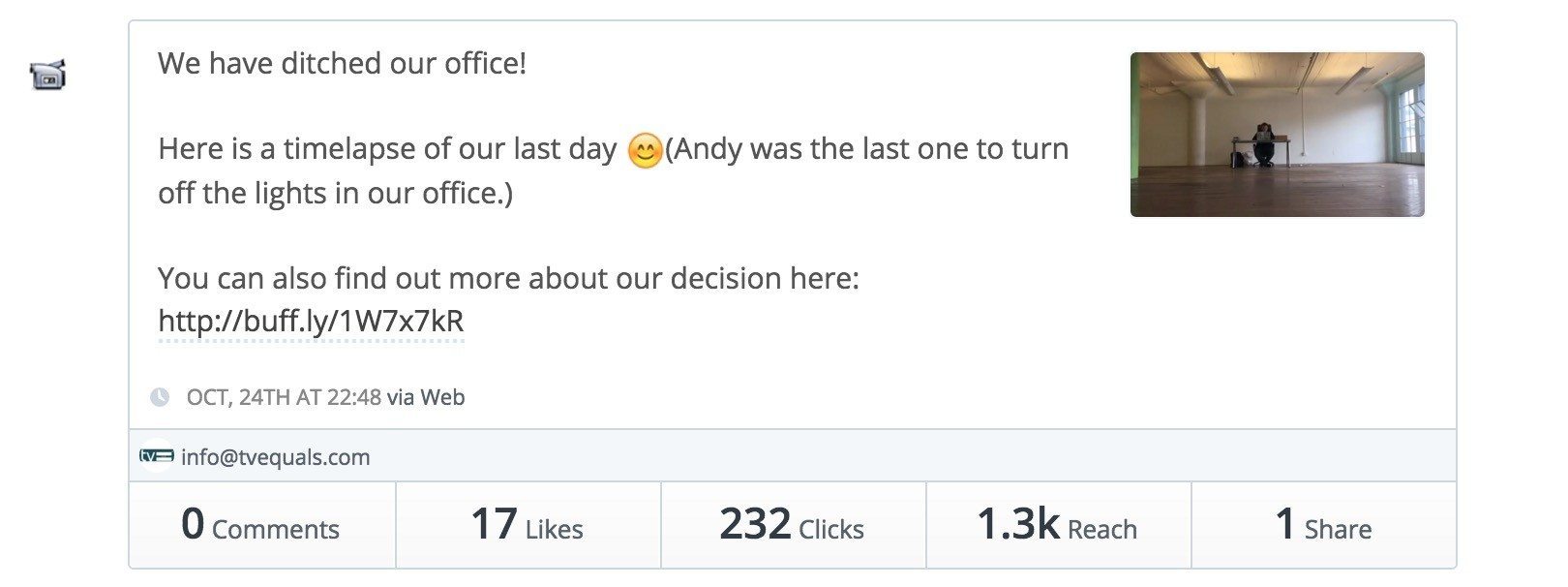
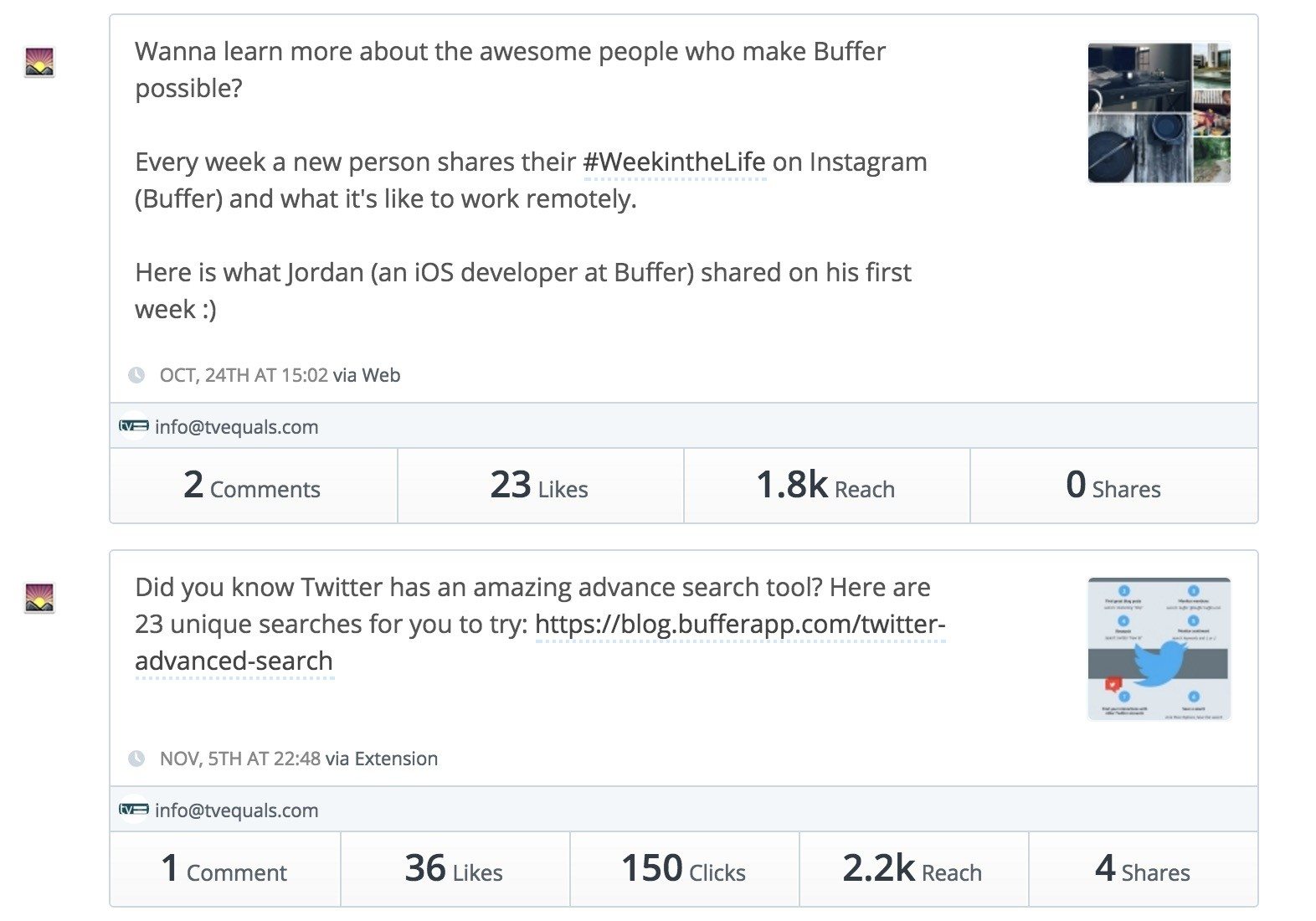
One of the things we’re also thinking of experimenting with is the timing of our shares. One of the tools that we will be using to find new optimal times to share is the Buffer Optimal Timing tool, which finds the best time for you to share on a specific social network and updates your Buffer schedule accordingly.
Over to You!
What are some of the steps you’ve taken to develop and perfect your social sharing schedule? Have I missed any steps? Do you have additional tips? I would love to hear them all in the comments section. ?
Try Buffer for free
190,000+ creators, small businesses, and marketers use Buffer to grow their audiences every month.


